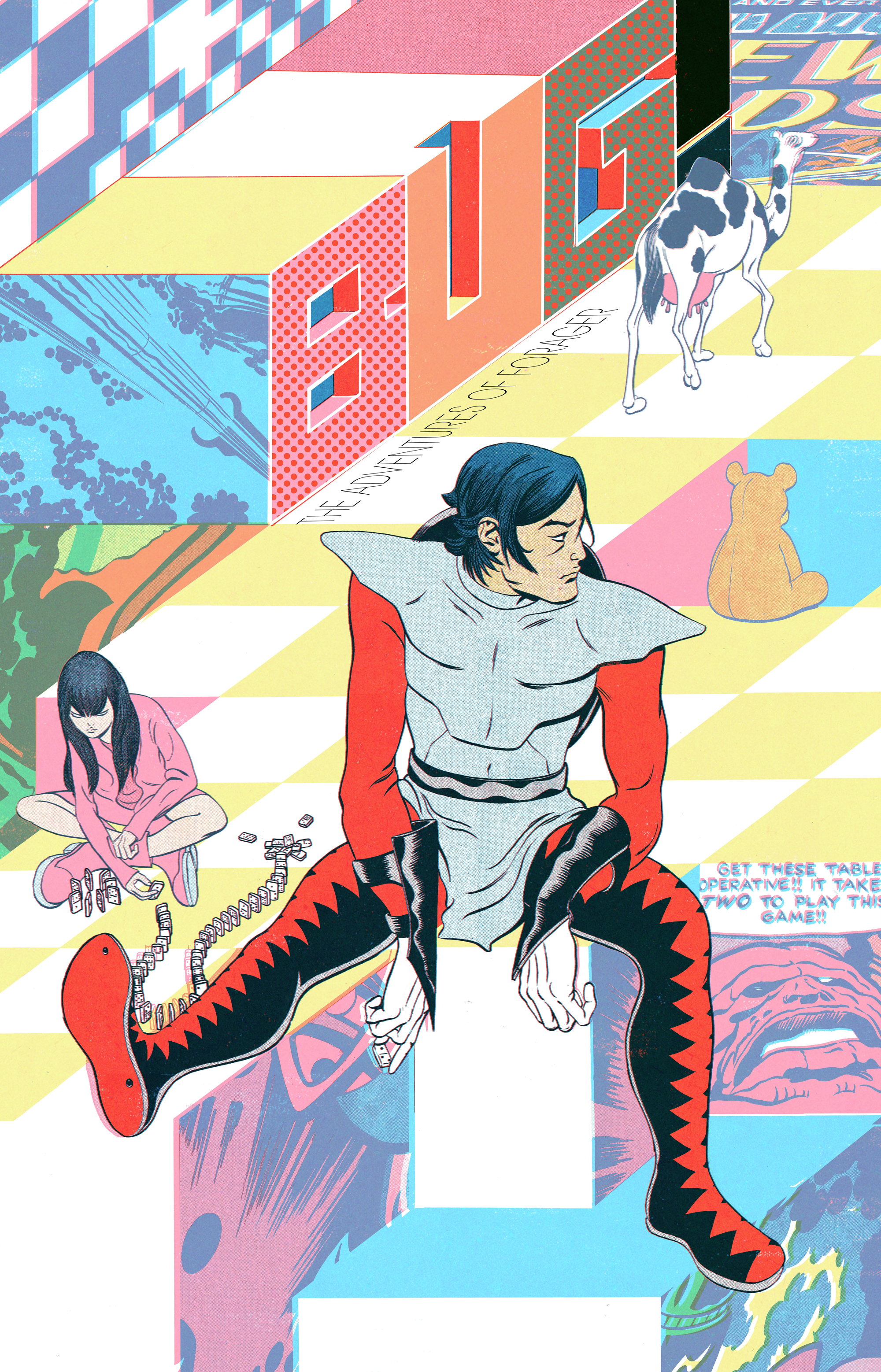
Today in comic shops, you can now buy the first issue of Bug!: The Adventures of Forager, the new mini under the Gerard Way-curated Young Animal imprint. This new take on Jack Kirby’s scrappy young Fourth World hero is brought to readers by Michael, Lee, and Laura Allred, and much of that same magic this very team brought to books like FF, Solo, and Madman: Atomic Comics (not to mention every other incredible comic that carries the Allred name on its cover) is present here, but infused with the mythos that the King of Comics brought to DC in the 70’s.
This week, in anticipation of the release of Bug!, The Beat got an opportunity to chat with Mike and Lee, with Laura also making a quick cameo in this discussion, about the new miniseries, their appreciation of Kirby’s contributions to the publisher, their creative process from the ground up, and some of the subtext inherent in the character and this very comic.
For Mike and Lee, could you describe the pitching process for this series? Mike, I know you and Gerard have worked together a few times now, but what made this particular project click as the first expansion of the Young Animal line-up?
Lee: Mike’s the one to ask on that. With his previous ties to Gerard, Mike handled the pitch process. Once DC and Gerard had greenlit the Forager character, that’s when jumped and tackled the paperwork stage — story arc synopsis, that kind of thing.
Michael: Briefly as possible, Shelly Bond was the first editor I ever had in my career, and even before the dawn of Vertigo comics we always looked for things to do together. Gerard also goes way back with Shelly and she was there when Gerard started curating Young Animal. So even before Young Animal Shelly was always trying to throw Gerard and I together. There’s one or two failed pitches I’d still like to bring back to life. Anyway, I was actually hoping to do Doom Patrol, but it timed out when I was amping up on Silver Surfer. And if I was the kind of guy who wanted to take unearned credit for other people’s success, and I am, I would point out that I was the one who turned Shelly on to the phenomenally talented Nick Derington, and then she shoved Nick’s work under Gerard’s nose. I’ve been a huge fan of Nick’s stuff since he was a kid, so it’s a thrill to fan out on what he and Gerard are doing together. And now with issue #7 I finally get to do a full issue with Gerard on Doom Patrol. But that’s not why we asked you here.
Making a brief answer even longer, Jamie S. Rich and I go way way back too. So the pitching process has always been very casual with these folks. Once something gets serious traction, then we formalize a proposal, which Lee is brilliant at. With Bug, I just kept suggesting him for everything and then somehow the powers that be lit up with enthusiasm, my schedule opened up, and we were off to the races.
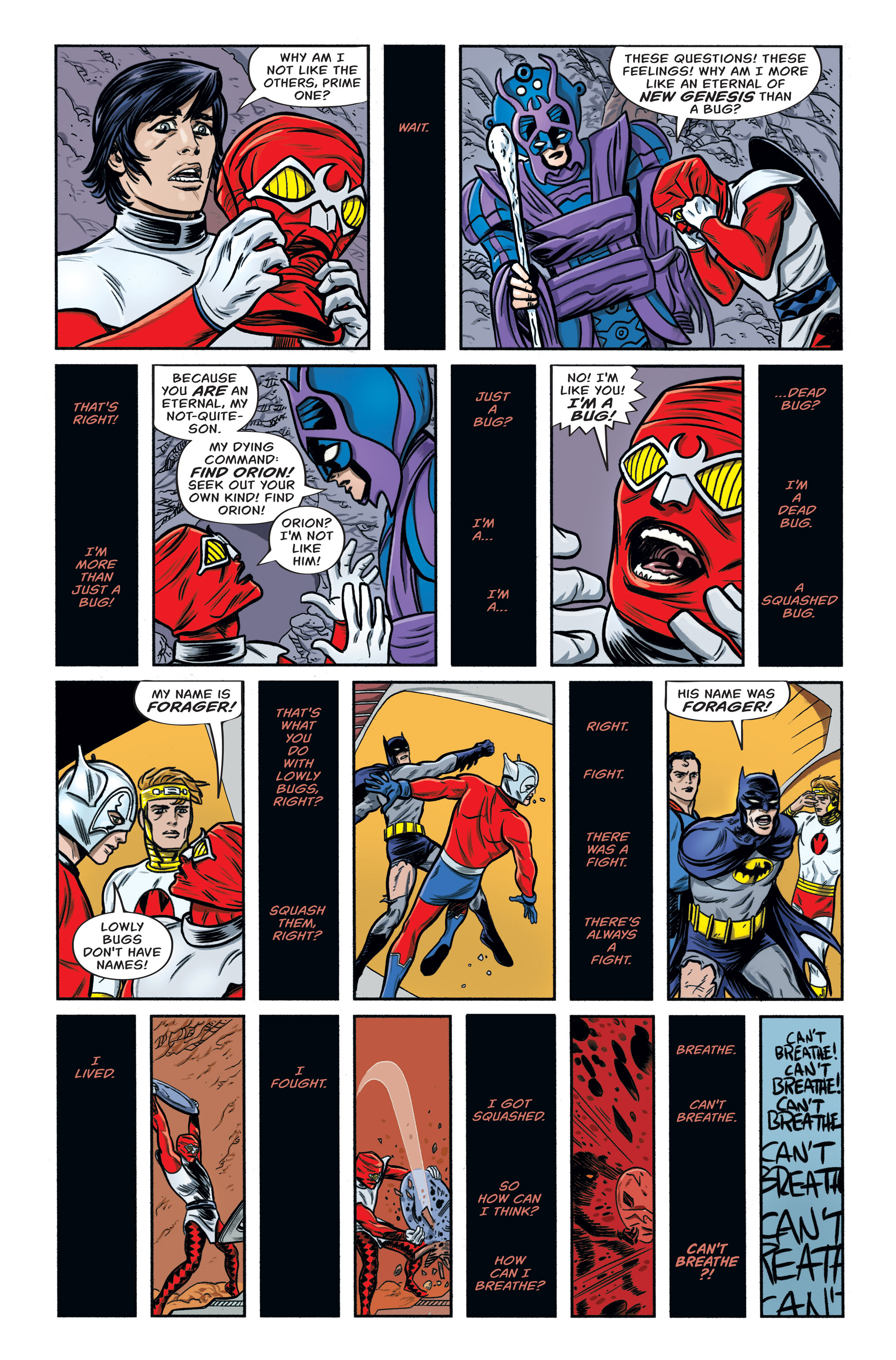
Lee: The theme of redemption resonates very powerfully with me. My favorite literary theme in fact. There are some characters during the course of BUG! who reach that redemption, and some who fail utterly.
Michael: And I’ve suffered with a psychological abnormality my entire life called “Existential Terror,” so I integrate those themes in my work as a kind of therapy.
What has your past relationships with Jack Kirby’s work been like and how do you think that it has inspired the work you do now?
Lee: No other person has had as much impact or as cast as long a shadow on the comics field as Jack Kirby. One of the great joys of working on this project was that I was finally able to read through Kirby’s Fourth World saga in the order it appeared, following it up with re-reading all his other DC Comics creations from the 1970s.
Michael: Right. It’s in virtually everything, whether fully realized or not. Much like The Beatles have consciously or unconsciously influenced all pop music since the 60s. With this Bug mini-series we’re digging into Kirby’s deepest DC tracks.
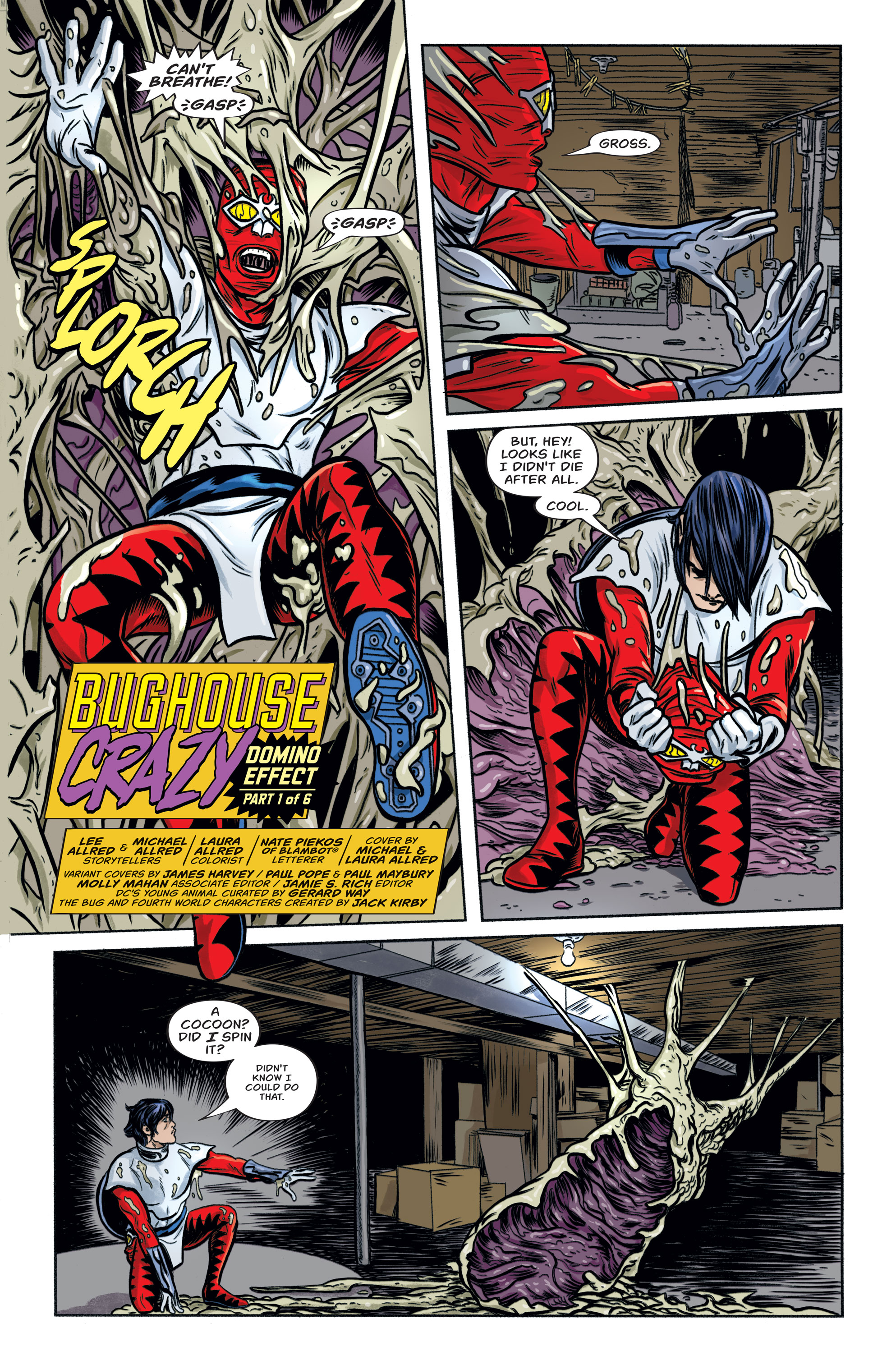
Lee: Mike draws and I write. But there is a very constant flow of communications throughout the process. It’s more collaborative than a simple “script by, art by” credit would suggest.
Michael: And again, being someone who likes to take unearned credit, any ideas that blow you away were my ideas. Any stinkers were all Lee.
Lee: Mike and I talked over the broad strokes of what we wanted to do in BUG! before scripting began. In nearly every panel during my scripting process I’m thinking “what would be really cool for Mike to draw? What would Mike enjoy drawing?” So he impacts the story even when we’re not phoning or emailing each other. Also as I write, I do up little stick-figure drawings to help convey to Mike some of the outlandish things I ask him to draw. On most of the mechanical gizmos in BUG! I sketch out suggested designs for him. After I finish up a script for an issue, I drive over to his house and we discuss it, review problems or issues he’s noted. Then I go home and fix it.
Michael: Truth be told, I can’t think of anyone that has influenced my tastes in mainstream comics more than Lee. Being my “Big Bruddah” he knows what’s going to ignite me.
Lee: I don’t work as directly with Laura as much, mainly as I’m following the “if it ain’t broke” rule, I don’t want to mess with Mike and Laura’s system. I might call out specific colors on occasion, but BUG! didn’t require much of that. Mostly I just step back in awe of what she does.
Michael: She makes us all look way better than we have any right to.
Lee: I do email back-and-forth with our letterer Nate Piekos on some of the specific crazy stuff I’m having him do. Nate’s one of the best in the business (if you haven’t checked out his Blambot website, you should!), so other than my specific crazy-train ideas, I just stand back and let him do his thing, too.
Michael: Nate has vastly improved our lives in many wonderful ways. I’ve designed the logo for almost every series I’ve done. Except iZombie, where my logo design was voted down. It was very similar to what we went with for the TV show, by the way. Anyhoo, almost all my logos have been derived from lettering Nate designed for me. He’s invaluable.
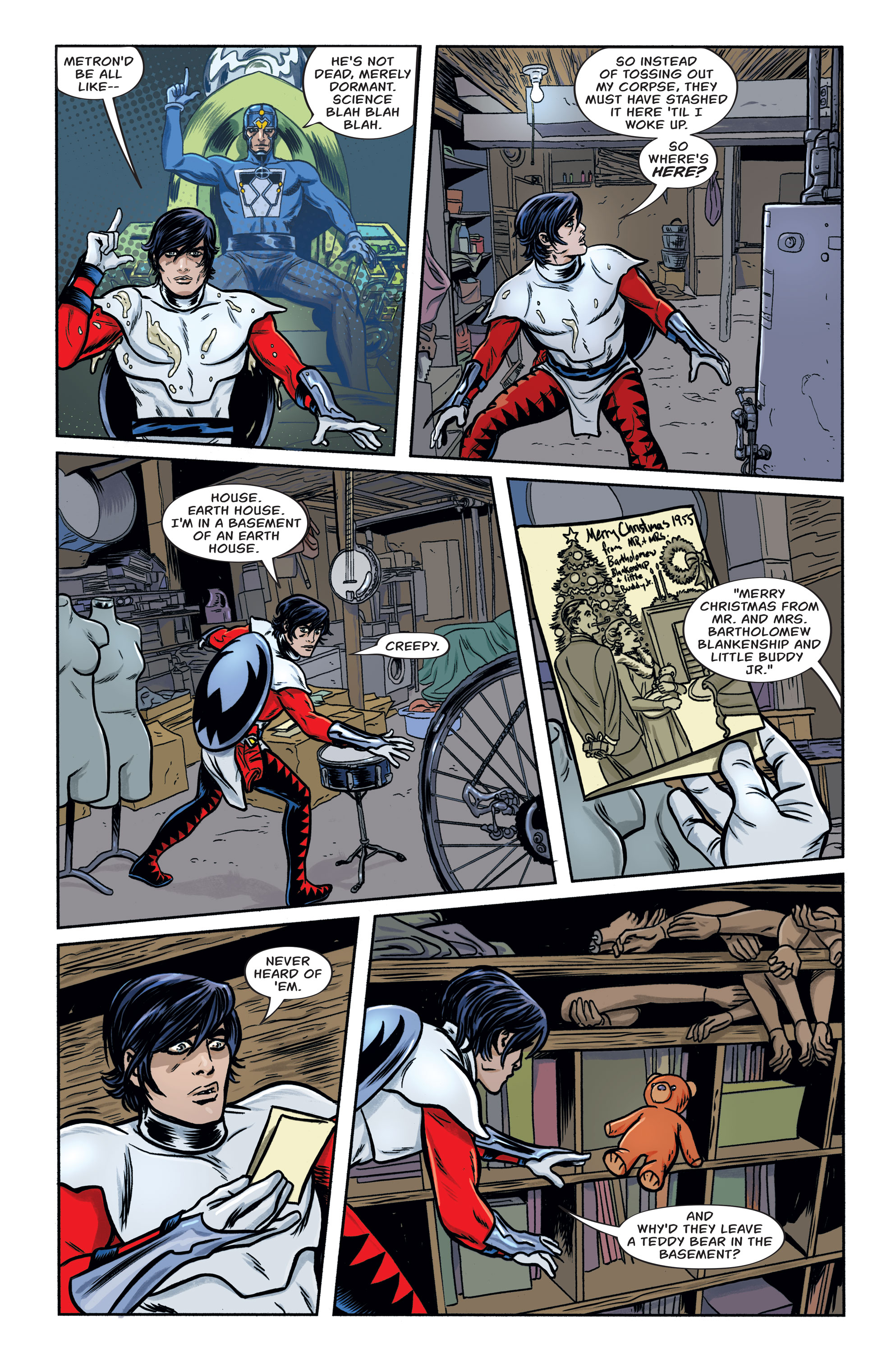
Lee: Forager is rather unique in Kirby’s DC pantheon. Incredible as it sounds, he appeared in only two Kirby issues of NEW GODS, and aside from an appearance here or a cameo there, didn’t really show up again until his death in Cosmic Odyssey. There’s not really all that much for new readers to catch up on. We could (and did) summarize his comic book career on a single page.
That said, as big of fans of Forager as Mike and I are, Cosmic Odyssey resonates very strongly with us (albeit for differing reasons). Some very powerful undercurrents from Cosmic Odyssey that we wanted to pull into our BUG! storyline. You’ll see its ripple throughout our story arc.
Michael: And most comic book fans can be real sticklers for continuity. We want to be respectful of that no matter how obscure. We’re actually currently resolving a small continuity kerfluffle in our BATMAN and the LEGION of SUPER HEROES special. Big fun! Ya gotta get this stuff right for the obsessive fans who are just like us.
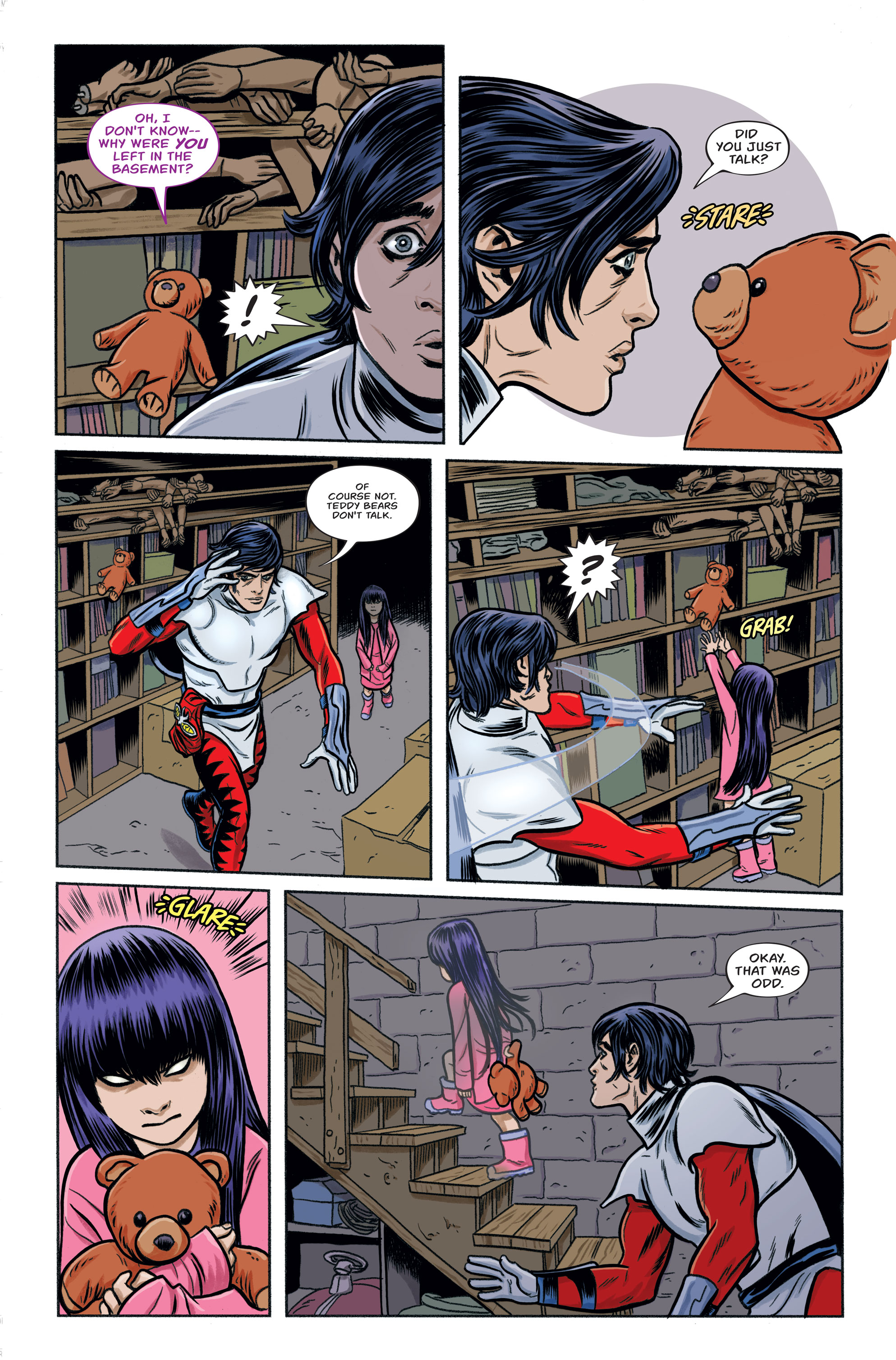
Lee: Speaking as one who’s presented academic papers at literary conferences in his wicked past (I’m recovering nicely, thank you!), I know how easy and how big a temptation it is to read one’s own issues and concerns into an author’s text. I try as much as possible approaching Kirby by just what’s in the primary text — what’s there inked, lettered, and colored on the four-color page. This doesn’t invalidate the subtexts you brought up; it’s just not anything I’ve thought enough on to comment on.
Michael: Agreed. I always love to hear what people read or interpret in a piece of entertainment. Even my own work. And I rarely contradict what their perception is. Unless there is a missed point that is extremely important to me. With the New Gods, which I’ve always been very passionate about simply on a creative level of fantasy, I want to honor what Jack Kirby presented as closely as possible. Unless he’s passionately quoted about some element in particular, I always prefer to stick with what is clearly communicated in the comics.
Laura, how did the coloring in Kirby’s earlier’ work with Forager and The Sandman influence your work on this title?
Laura: I want what we do to have a timeless classic feel to it. I often used to see what we do referred to as retro or old-fashioned, but as we’ve progressed, as every artist should try to do, I think our consistent effort to feel out each story on a gut instinctive basis, tied to the “timeless classic” initiative gives everything a fashion forward feel.
Having said that, I know many people may regard Kirby as old-fashioned. But I see him as one of the best examples of “timeless classic”. And so that’s my approach.
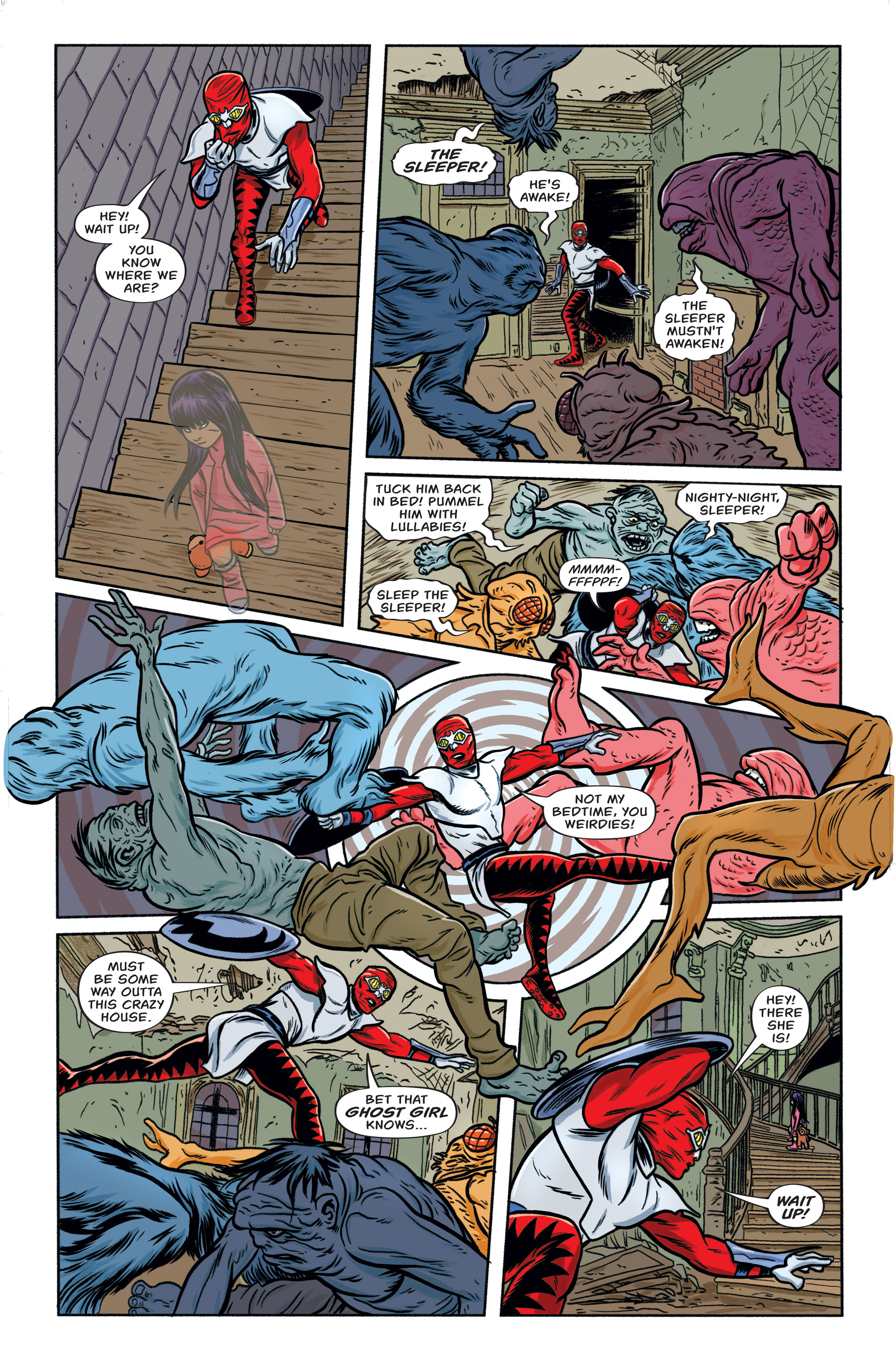
Lee: Blame my parents! As a kid, they severely limited the number of comics I could buy. As a result, to get the most bang for my buck I filled those slots with team books — Justice League, Avengers, Legion of Super-Heroes. Team books, or the occasional solo character book with a guest star. The more superheroes in it, the better I liked it.
I guess that’s carried over into my comic book writing. So for our BUG! romp across the Kirbyverse, I tried to include a number of other great Kirby characters that like Forager himself, hadn’t managed to hit their full stride with readers.
As for Deadman specifically, I’m inordinately fascinated by Kirby’s take on the character. It’s such an anti-thesis of the ghostly Deadman I usually think of. I wanted to explore that. (And yes, it’s a good bet you’ll see more hand-switching than you can shake a hook at!)
Michael: And again, a wonderful opportunity to do some Jack Kirby deep tracks diving.
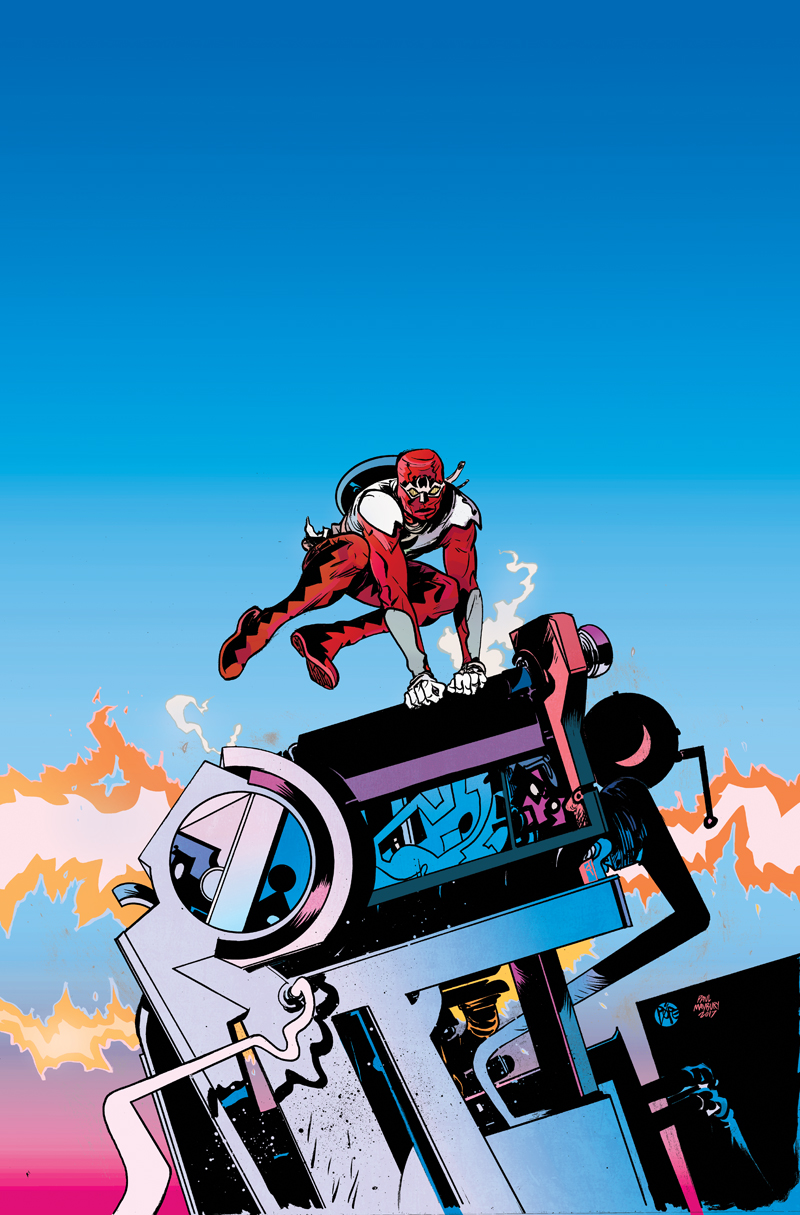
Lee: The central premise of the Fourth World mythology is the battle between the Life Equation and the Anti-Life Equation. Kirby was very blunt on this; the Life Equation is free will; Anti-Life the complete and utter abrogation and annihilation of free will.
The exercise of free will is a central tenant (if not the central tenant) in number of faiths and philosophies, my own included, so the issue is certainly one of centrality in my fiction as well.
Kirby, a combat infantryman in WW2, specifically called out the totalitarianism he fought, mentioning the Axis and their leaders by name even, in Forth World texts. The crushing of the spirit; the extinguishing of the smallest spark of freedom. Kirby wrote of it in a grand, mythic scope. Will Orion succumb to his genetic inheritance as Darkseid’s son or will he act of his own accord as an adopted champion of New Genesis? Will Scott Free escape the prison of his past life on Apokolips?
I’m writing BUG! with an eye more towards a smaller, more personal debate on Free Will. A tighter focus, perhaps, but with just as much at stake.
As you mentioned, I do bring the writings of Camus to the discussion, not necessarily because I agree with his central thesis, but because he has very interesting (and pertinent) things to say on the matter. I thought to perhaps introduce him to BUG! readers in case they might want to read further. At the very least, BUG! teaches the comic reading public a mnemonic for pronouncing his name.
We see Forager try reclaim his free will, his sense of self, and his freedom in general throughout this first issue, but by the end of it all he still has no control over where he’s going to end up in the universe. Without spoilers, can you give us a general idea of the places Forager will go throughout this mini-series?
Lee: Well, that’s certainly Forger’s take on the matter at the end of the first issue. That’s very much his frame of mind at that moment. (A certain bear might point out however, that the glass didn’t smash itself.) During the course of the story arc, certain key moments occur –we’ve helpfully listed them out to readers in our first issue by means of a story mechanism – that will give Forager a chance to reappraise his opinion.
Michael: If we’re successful, hopefully folks will be genuinely moved by where Forager ends up. Lee has the whole mini series scripted out already, and it’s beautiful.
What can you tell us about our new ghostly friend that appears throughout the first issue and her teddy bear companion? He seems particularly important given his appearance in the mosaic of Kirby-related characters.
Lee: BUG! is essentially a road trip, and every road trip needs travelling companions. The “ghost girl” (as Forager calls her) and the talking teddy bear appear on the cover of BUG! #3 in solicits, so they’re obviously more than one-issue bit players. Indeed, the two are vital to the events in the book and the evolution of BUG’s character arc. More than that would be telling at this point.
Michael: Just a little tease here. Things aren’t always as they first seem.
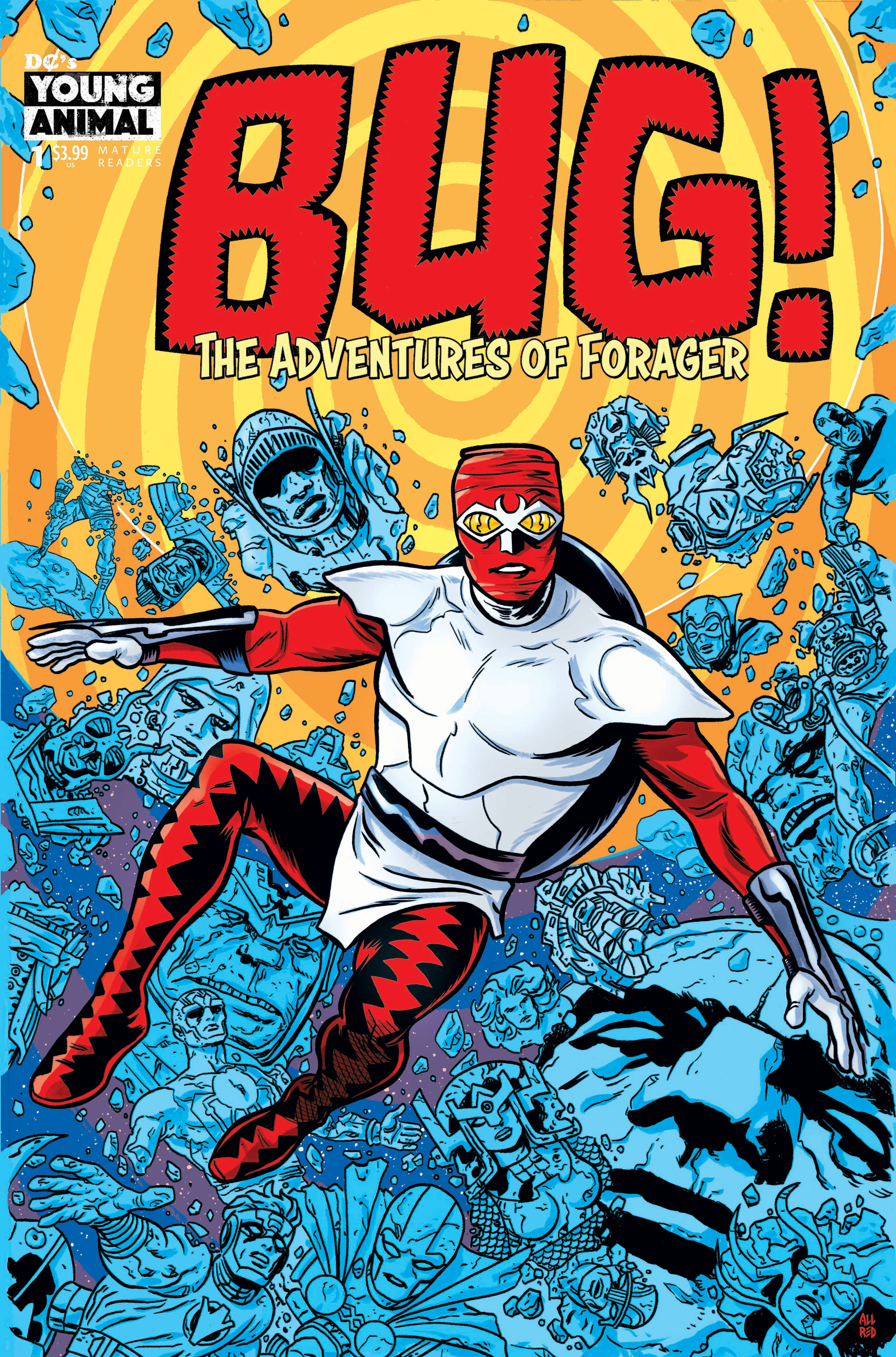
Lee: Only the Source knows.
Michael: May the Source be with you!
Between Kamandi Challenge, another unannounced Fourth World project, and Bug! We are being treated to quite an embarrassment of riches for the Kirby Centennial at DC, how do you feel that Kirby’s DC work impacted the publisher, and just what is it about these characters that inspires so many tremendous talents like yourself to want to try their hands at them? Also, as an aside, for anyone discovering his DC work for this first time, what do you think are the essential comics to read? Not so much to understand Bug, but to enjoy some of the finest superhero comics ever made.
Lee: Kirby is Kirby. It’s like asking an actor why do Shakespeare or a concert pianist why play Mozart?
As for where to begin reading Kirby, DC has made it very, very easy. They’ve collected up Kirby’s DC stories in a series of omnibus volumes. The entire Fourth World epic, for example, is collected in four volumes. I’d start there. Then there’s volumes for other Kirby titles such as OMAC, Kamandi, Demon, The Losers, and his golden age work with Joe Simon. Lastly, there’s the two Kirby Omnibus volumes collection his miscellaneous DC stories. Volume One is his 1950s tenure – Green Arrow and his sci-fi anthology stories. Volume Two served as my Kirby Rosetta stone for scripting BUG! – it’s where you’ll find Kirby’s 1970s characters like his Sandman, Atlas, and Manhunter. It’s my favorite volume out of the entire series.
Michael: The Fourth World Omnibi is particularly impressive where there’s a very specific order for all the main titles to be read offered. Beautifully printed and classy volumes.
And as brief and powerful as Bug’s introduction was in issues 9 & 10 of New Gods, so was Kirby’s impact on DC. It was relatively brief, but everlasting. Even if you just look at the significance of Darkseid. Overall, Jack Kirby opened up doors of creativity and exploration in the DCU that we’ve all infinitely benefitted from.
Bug!: The Adventures of Forager #1 is available now in comic shops everywhere with variant covers by James Harvey and Paul Pope.








Are the Fourth World Omnibuses even in print? I’m seeing vol 4 priced at $100 on Amazon for a used paperback.
Heading back to print later this year, at least as one giant omnibus in early December (that’s gonna be a hefty one!). I’m not sure if the individual volumes are also being reprinted.
Good to know, thanks. I’ve got the first three; it’d be nice to be able to pick up vol 4.
Shame Mike Allred couldn’t’ve brought the same enthusiasm to Art Ops, his recent Vertigo series he couldn’t even turn up to draw (too busy doing Silver Surfer, so why start a creator-owned book?) I don’t much care for his work now, because of that (Art Ops deserved better)
Comments are closed.